 Severna Park elected official, Severna Park Delegate Tony McConkey has represented the community in the Maryland House of Delegates since 2003. Tony is the Ranking Republican on the Maryland House Appropriations Committee, the Senior Republican and former Vice Chairman of the Anne Arundel Delegation, and a former Deputy Whip. Tony is a native Marylander and lives in Severna Park with his wife of 15 years, Susan Dill McConkey, and their three children. Susan is a Severna Park native whose family moved to the community in 1917 and whose parents Lanny & Mary Dill ran a popular local plumbing business.
Severna Park elected official, Severna Park Delegate Tony McConkey has represented the community in the Maryland House of Delegates since 2003. Tony is the Ranking Republican on the Maryland House Appropriations Committee, the Senior Republican and former Vice Chairman of the Anne Arundel Delegation, and a former Deputy Whip. Tony is a native Marylander and lives in Severna Park with his wife of 15 years, Susan Dill McConkey, and their three children. Susan is a Severna Park native whose family moved to the community in 1917 and whose parents Lanny & Mary Dill ran a popular local plumbing business.
Jan 2017 – Opening Day For The New Severna Park High School – Cap
Aug 10, 2016 – Construction Of New Severna Park High School Nears Completion – SPV
Feb 24, 2014 – Comptroller Tours Severna Park HS And Promises To Find Money To Start Project – Sun
Severna Park Events
July 4 – Severna Park 4th of July Parade
July 9 – Earleigh Heights Carnival
Severna Park Churches
Our Shepherd Lutheran Church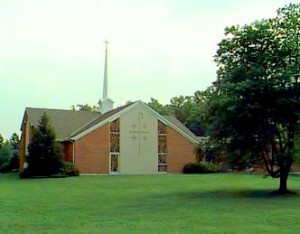
St John’s The Evangelist Catholic Church
St Martins In The Field Episcopal Church
Severna Park Baptist Church
Severna Park Church of God
Severna Park Evangelical Presbyterian Church PCA
Severna Park United Methodist Church
Trinity Baptist Church
Woods Memorial Presbyterian Church
Severna Park Community Center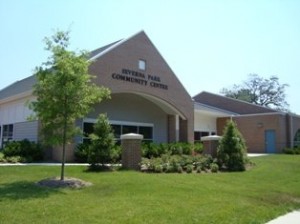
Severna Park Community Center
Severna Park Library 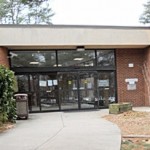
Severna Park Library
Severna Park Newspaper
Severna Park Voice
Severna Park Post Office
21146
Severna Park Community Organizations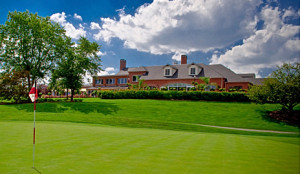
Aspire
Chartwell Country Club
Greater Severna Park Council
North Severna Park Pool
Severna Park Schools
Benfield Elementary School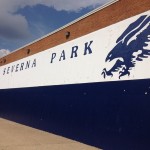
Folger McKinsey Elementary School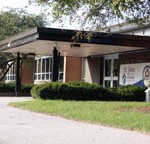
Jones Elementary School
Oak Hill Elementary School
Severn School
Severna Park Elementary School
Severna Park High School
Severna Park Middle School
St John The Evangelist School
St Martin’s in the Field Day School
Severna Park Communities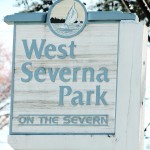
Berrywood South Community Association
Carrollton Manor
Chartridge Community
Chartwood Community
Cypress (Creek) Improvement Association
Olde Severna Park Improvement Association
Round Bay Community
West Severna Park Community Association
Severna Park History
You’ve all driven past it – the quaint little brick railroad station located south of Riggs Ave. just off of Old Annapolis Boulevard in Severna Park. It didn’t always look like that, and it wasn’t always in that exact spot.
The first railroad station was a small 6×8 foot shed, open in the front, with fixed benches on each of three sides, and under a roof. According to one plat it was located just north of where Riggs Ave. crossed the tracks. It was called the Boone Station after the name of early landowners Elizabeth and Tom Boone, who sold a strip of their land to the Baltimore and Annapolis Short Line Railroad in 1896.
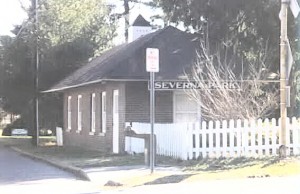 The trains did not make regular stops, but there was a paddle attached to a pole which was held up in a horizontal position if you wanted the train to stop. And such trains they were – bumpety bump, and puffing steam. Until late fall, 1908, that is, when electric passenger trains were put on.
The trains did not make regular stops, but there was a paddle attached to a pole which was held up in a horizontal position if you wanted the train to stop. And such trains they were – bumpety bump, and puffing steam. Until late fall, 1908, that is, when electric passenger trains were put on.
Clusters of houses tended to grow up around railroad stations in those days, and real estate agents became active in promoting the sale of lots. That is how Severna Park’s growth was encouraged. As more and more folks moved down to dwell along the Severn and commute to Baltimore by train, there was increasing agitation for a more comfortable station. It was also true that the Boone post office, located in Grotzky’s store (now the Codd Building) needed a new location. Hopefully, the two needs could be met in one new station.
It was just after World War I that the General Manager of the Annapolis Short Line wrote Mr. Holland M. Teel, then president of the local Improvement Association, that the railroad company just wasn’t financially able to construct a new station. More negotiation followed, and finally it was agreed that the railroad would pay $500 of the cost of the station and the balance, some $300, would be
paid by the Severna Park Improvement Association. It was agreed that when the building was completed and paid for, the railroad would deed over the ground it was providing for the station to the Improvement Association.
The station was completed in July, 1919, at which time the post office was moved into it. The building was heated in the winter months, and was the finest and most comfortable station along the route between Baltimore and Annapolis. Interestingly enough, it was the only station along the entire route that was built with the help of private funds and not owned outright by the railroad.
On July 11, 1921, the name of the station was changed to Severna Park. At long last the name of the town was official. In 1925 the station, only one half as large as it is now, was expanded to its present size. It continued to serve both as station and post office for another 25 years. Then, on February 5, 1950, the last passenger train made its last run on the railway. The building was no longer a station, but it continued to be useful.
The Severna Park post office remained there until 1951 when it was moved to what is now part of Dawson’s store. The station was then used for several years as classrooms for the overflowing elementary school in Severna Park. Late in 1956 it became the Severna Park Library.
Today it houses The Severna Park Model Railroad Club. The club moved in during 1966 and started to build a railroad empire inside the station. The railroad was completed in 1982. The model railroad has been rated as one of the ten best in the country. Trains run on Thursday nights at 8:00 P.M. when the club meets. Then it comes alive with the merriment of twenty some enthusiastic Severna Park model railroad engineers and the clickety click of model trains running around the tracks.
_________________________________________________________________
Local Historian Reflects On Severna Park’s Early History
By Dan Giles, April 4, 2013, Severna Park Voice
This marks the first in a series of articles covering a comprehensive history of Severna Park, sourced from three books expressly about our towns history including: a 1998 publication by Nelson Motter; Reflections, a 1996 collection of first-hand accounts from the 1920s-50s; and Linstead on the Severn: A History.
Additionally, a major contributor is Scott Jay, a resident and expert on the community through first-hand experience and research.
The discovery of arrowheads in this area indicates the presence of human life possibly as far back as 10,000 years ago. This figure is uncertain; however it is known how prior to modern development, a wealth of fish and wildlife flourished here. Jay related a story of a friend who, in the 1930s, could pluck several crabs from the Severn River faster than his mother could collect a couple of tomatoes.
The first colonists along the Severn River were Puritans from Nansemond, Virginia, in 1649. They originally named the river Ann Arundel. It was soon renamed the Severn after a major river in England. When the Puritans settled Providence (today, Annapolis) toward the mouth of the river, the lands along the Severn were left to the native Susquehanock tribe.
At this period, the land was open and dominated by large, well-spaced trees; it was a wilderness where encounters with deer, black bears, and mountain lions were likely. Native American trails existed and a horse-drawn buggy could navigate the area; however, the Puritans preferred to travel by water because it was considered safer and easier.
The next major milestone for the Severn was in 1670. The Lord Proprietor divided what is now Severna Park into five land grants, stretching from todays Joyce Lane to Shipleys Choice. In 1680, one of these land grants, which encompassed 102 acres of land from Linstead to Olde Severna Park, was purchased by Christopher Randall and creatively dubbed Randalls Purchase.
In 1721, Randall sold the grant to John Earshaw, who immediately sold it to John Worthington. In 1758, Worthington constructed The Brick Farm House, which still stands today. Between 1985 and 2001, Scott Jay purchased and fully renovated the Farm House. Jay recalled uncovering an area with scraps such as bird skulls and oyster shells where he believes the builders ate their lunch.
In 1856, George Linstid divided Randalls Purchase into three equal properties of 91.5 acres each and gave them to his three children; John Linstid III received the property with the Farm House which became the community of Linstead while Elizabeth Boone and Georgie Linstid received the other two properties which would become Olde Severna Park.
The home where Elizabeth Boone lived with her husband is known today as The Boone House, which still stands adjacent to Severn School. Georgie Linstid also received a property which was demolished several years ago with the construction of Severn Schools new athletic complex. Coincidentally, Jay was born in that property.
Because the large Boone family made up most of the residency in the area, Severna Park was originally known by their name and the station along the Baltimore-Annapolis railway was referred to as such. The lineage of the Boone and Linstid families features prominently in Severna Parks history; much of the family is laid to rest in a cemetery remaining a few properties away from the Farm House. The community of Round Bay originated as a railway extension that took passengers down to the beach.
By 1898, the Farm House was vacant and its ownership was disputed among Linstid and Boone descendants. It was bought at auction by the Riggs Brothers, wealthy twins from Baltimore who used it for upper-class entertaining. Governor Ritchie himself was known to stop by the Riggs social events at the Farm House.
The name Severna Park is believed to originate from a 1906 contest held by Oscar Hatton while the modern community was first becoming established. The winner would receive a portion of land but controversy arose because the winner was an African-American woman, who was instead rewarded $500.
In the 1920s, Severna Park still consisted mostly of open fields. A nine-hole golf course belonging to the Severna Park Golf Club spread across what eventually became the neighborhood of Linstead. The first hole was located at the intersection of Riggs Avenue and Evergreen Road. The Hendler property was constructed in 1928, and Hendler offered to create nine more holes for the course and make his estate a clubhouse if he and his company could have free access to the course. Today Scott Jay has renovated and resides at the Hendler property.
In 1942, the Farm House came into the possession of the Carter family, which had two sons. One of the sons attended the Naval Academy while the other attended West Point. The West Point student was roommates with General Dwight D. Eisenhowers son. Sometime before becoming president, Eisenhower visited the Farm House for dinner with the Carters.
During World War II, every able-bodied man in Severna Park went to war. The local Brockmeyer family had five sons who went to war. Two did not return; one was lost in the Pacific and one in Europe. The Brockmeyers owned a popular bar/restaurant called Feesers on Cypress Creek Road, which was torn down and replaced by the Ebersberger facility in 1992. A newsletter with local news was mailed out to all soldiers from Severna Park so they could know what was happening back home. The local war memorial records the names of all residents who went to war.

Hi, Mr. McConkey,
Interesting Severna Park history and listings of neighborhoods. But I live in the Kensington Community ~ officially known as Benfield Manor ~ and it isn’t listed as one of the Communities. Chartridge ~ where I also once lived, is listed ~ and yet is a much newer Community. I am wondering why Kensington ~ just off of Benfield Road near the Safeway isn’t listed. Thank you! Happy upcoming 4th of July!!